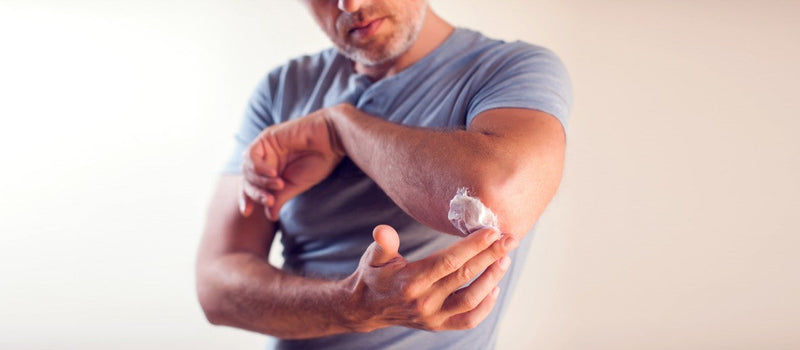

Among the many things that involve managing diabetes is care for your feet. Diabetic foot complications are the result of having too much glucose in your blood for a long time, which can damage nerves and affects blood flow. Foot complications affect more than 20 percent of people treated for diabetes.[1]
Neuropathy is serious diabetic foot complication
Neuropathy or nerve damage is the most common chronic complication affecting diabetes and feet, with an estimated lifetime prevalence exceeding 50 percent in people with diabetes. Among various forms of neuropathy, diabetic peripheral neuropathy (DPN) affecting the feet, legs, hand, and/or arms is the most common [2] Factors leading to nerve damage in diabetic feet include:
· Blood sugar levels that are hard to manage
· Having diabetes for a long time, especially if your blood sugar is often higher than your target levels
· Being overweight
· Being older than 40 years
· Having high blood pressure
· Having high cholesterol
Diabetic foot neuropathy also can cause numbness so that you might not feel a foot injury, cut or even a blister that could result in a diabetic foot ulcer. Infected foot ulcers can lead to hospitalization and even leg amputation. Poor blood flow also contributes to the potential for a diabetic foot ulcer.
Watch for other diabetic foot problems
· Calluses: Calluses on diabetic feet are common because of high-pressure areas under the foot. If not trimmed, calluses can get thick, break down and turn into ulcers.[3]
· Charcot foot: Nerve damage can trigger a rare condition called Charcot foot. It is an inflammatory process that affects soft tissues, bones and joints in the foot or ankle causing foot damage or deformity.
· Peripheral artery disease: Peripheral Artery Disease (PAD) is a complication of diabetes. It reduces blood flow to the feet and can further delay healing of wounds as well as increase your risk of foot infection.[4]
Prevent dry skin from affecting diabetic feet
Diabetes can cause your skin to become very dry. High blood glucose levels may cause greater loss of fluid from the body leading to dry skin on the legs, elbows, feet, and other areas. In fact, dry skin may be the first sign someone has diabetes. Left untreated, persistent dry skin can lead to serious infections. [5]
To keep feet from getting dry and cracked, which can lead to infections, consider products such as EASE-Z Diabetics’ Dry Skin Therapy Foot Cream. It is an over-the-counter (OTC) offering that uniquely features active Zinc Acetate to relieve and protect dry, cracked skin associated with diabetes. EASE-Z Diabetics’ Dry Skin Therapy Foot Cream covers feet with a thick protective layer that penetrates to provide real, long lasting-relief. It is unscented and non-greasy for added comfort. Daily use gives superior recovery and continuous relief, assuring long-lasting comfort.
Look for specifically designed footwear for diabetic feet
Diabetic footwear is structurally designed to prevent pressure on the feet. A wider toe width or “toe box” gives toes more room to move to help prevent blisters and hot spots on diabetic feet that can develop when toes rub against each other or against the shoe. Diabetic shoes also may have extra depth for a pressure-free fit. Shoes for diabetic feet have lightweight, cushioning soles to facilitate mobility and stability and reduce impacts on the feet. [6] They also help restrict air flow inside, which helps prevent moisture that can cause bacteria to form in your feet. [7]
Also consider diabetic socks if you have diabetic foot problems or note a change in the color or temperature or your feet, nerve damage, fungal infections, or irritation. Diabetic socks are designed to keep feet dry, reduce foot injuries and aid circulation. They feature:[8]
· Moisture wicking material, which allows sweat to evaporate.
· No seams along the toe to reduce the risk of rubbing and blisters.
· Non-elastic binding so they do not restrict blood flow.
Follow other diabetes and feet care guidelines
Wash your feet every day. Use lukewarm water and mild soap to wash feet. Do not soak your feet. Dry your feet completely and apply lotion to the top and bottom but not in between toes. Applying lotion to the moist area could lead to infection.
Never go barefoot. Always wear shoes and socks or slippers, even inside, to avoid injury. Break in new shoes slowing until they are completely comfortable, wearing them maybe an hour or two a day.
Cut your toenails straight across. Gently smooth any sharp edges with a nail file. Curved nails could become ingrown. Have your podiatrist trim your toenails if you cannot see or reach your feet.
Do not remove corns or calluses yourself. And do not use over-the-counter products to remove them since they could burn your skin. Gently use a pumice stone to remove corns and calluses after shower or bath when you skin is soft.
Keep the blood flowing. Exercise to stimulate blood flow in legs and feet. Also, put your feet up when you are sitting, and wiggle your toes for a few minutes several times throughout the day
When to see your doctor about diabetic foot problems
Visit your foot doctor every year for a complete exam. If you have any of the following problems, see your doctor right away:
· Tingling, burning or pain
· Loss of feeling
· Dry or cracked skin
· Redness, increased warmth or swelling
· Fungal infections
· Sores, blisters, wounds
Follow these guidelines to put your best foot forward and avoid the problems that can arise with diabetes and feet.
[1] OrthoInfo, “Care of the Diabetic Foot,” American Academy of Orthopaedic Surgeons,” Accessed August 7, 2024, https://orthoinfo.aaos.org/en/treatment/care-of-the-diabetic-foot
[2] Pop-Busui R, Ang L, Boulton AJM, Feldman EL, Marcus RL, Mizokami-Stout K, Singleton JR, Ziegler D. Diagnosis and Treatment of Painful Diabetic Peripheral Neuropathy. Arlington (VA): American Diabetes Association; 2022 Feb. PMID: 35544662. https://pubmed.ncbi.nlm.nih.gov/35544662/
[3] “Foot Complications,” American Diabetes Association, Accessed August 7, 2024. https://diabetes.org/about-diabetes/complications/foot-complications
[4] OrthoInfo, “Care of the Diabetic Foot,” American Academy of Orthopaedic Surgeons, t
[5] “How to Manage Early Stage Dry Feet Diabetes: Tips for Healthy Skin and Bood Sugar Control, Modern Foot & Ankle, April 8, 2024. https://www.modernfootankle.com/resources/foot-care/guides/early-stage-dry-feet-diabetes
[6] Gershman, Steven, “The Difference Between Diabetic Shoes and Regular Shoes, OrthoFeet, February 4, 2019. https://www.orthofeet.com/blogs/news/the-difference-between-diabetic-shoes-and-regular-shoes
[7] Burns, Jasmine, “Diabetes Shoes: How to Find the Right Diabetic Shoes,” The Diabetes Council.com, Accessed August 7, 2024, 2023. https://www.thediabetescouncil.com/best-shoes-for-diabetes/
[8] Woolley, Elizabeth, “What Are Diabetic Socks, VeryWell Health, February 7, 2022. https://www.verywellhealth.com/what-are-diabetic-socks-1087728








